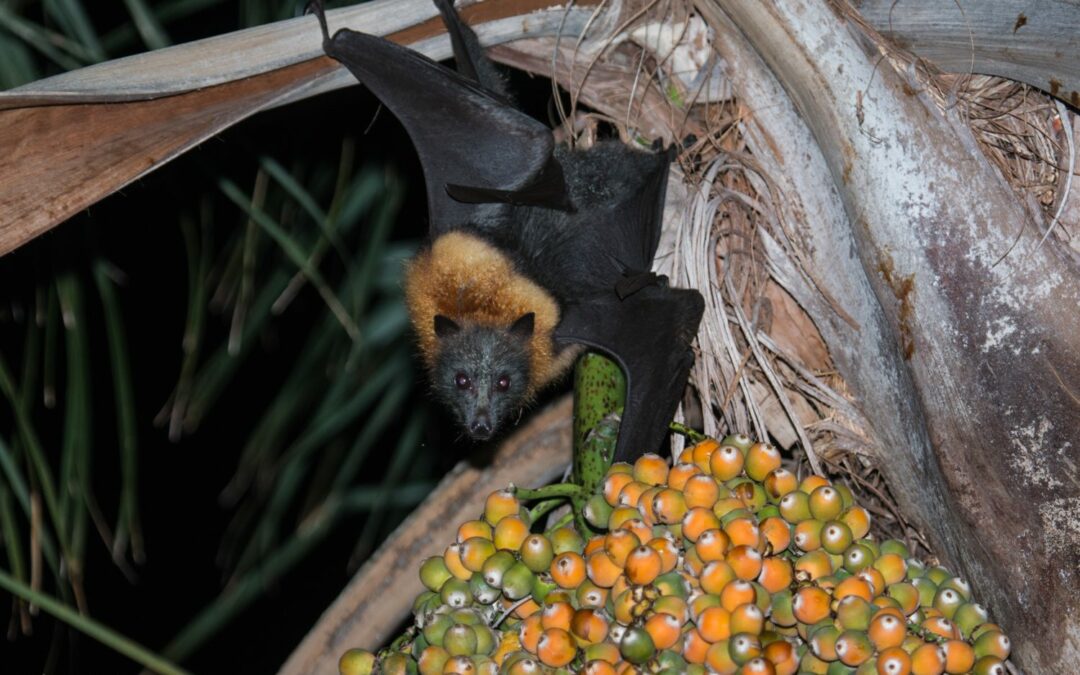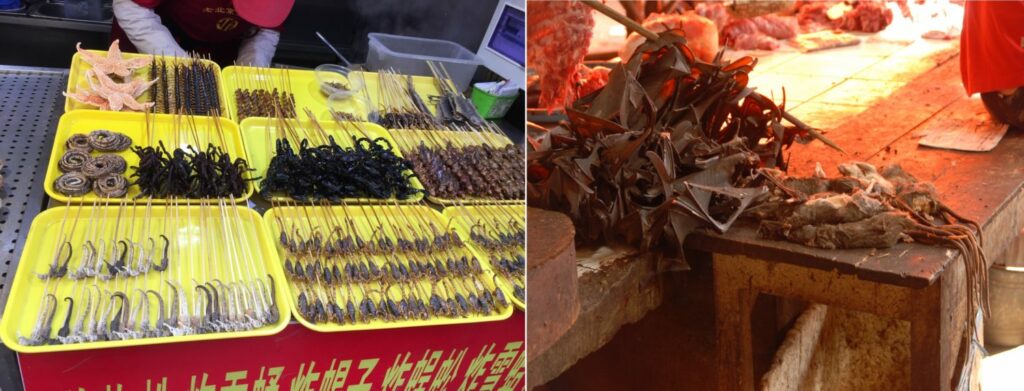In January 2020 the news of an epidemic outbreak of severe acute respiratory syndrome caused by a previously unknown agent that the World Health Organisation (WHO) has ended up declaring a pandemic of the COVID-19 coronavirus disease, and which has caused that Spain and other countries to declare a state of emergency. The causative agent is a coronavirus called SARS coronavirus 2 (SARS-CoV-2).
During this time, there has been a lot of speculation about the possible origin of this pandemic and loose parallels have been drawn with the conclusions derived from the emergence of other diseases caused by coronaviruses such as SARS or MERS. The sever acute respiratory syndrome (SARS) epidemic was declared in 2003, also in China, and was caused by the SARS coronavirus 1 (SARS-CoV-1) causing over 8,000 cases and almost 800 deaths in various countries. Civets are considered to be the direct source of the outbreak, as the virus could be detected in samples taken from these animals at the live wildlife market in the city of Guangdong where it originated. However, the virus was never found in wild civets, so these animals were considered to not be the natural reservoir but rather an intermediate host. The search for the natural reservoir therefore continued in other animal species in China, and very similar viruses (generically known as SARS-like coronaviruses) in horseshoe bats (Rhinolophus sp.). subsequent studies have revealed the presence of SARS-like coronaviruses in bats from other parts of the world, as well as a wide variety of other coronaviruses. These viruses do not appear to cause disease, which is a sign of good mutual adaptation developed over a long common evolutionary history. This fact has led to the proposed hypothesis (and it remains a hypothesis to this day) for the emergence of SARS, that it jumped from a species of horseshoe bat to civets, and from these to humans.
In 2012, another outbreak of what would later come to be known as Middle East Respiratory Syndrome (MERS) was declared in Saudi Arabia, which turned out to be caused by another coronavirus, this time transmitted by dromedaries. To date, 2,494 cases and 854 deaths have already been recorded and the vast majority in countries around the Persian Gulf, although imported cases have also been reported in other countries. Unlike SARS, the jump from dromedary to human has not been a unique event and a good part of the diagnosed infections are associated with direct contact with these animals, since the virus’ ability to establish effective transmission chains between humans is very limited. Among the great variety of bat-borne coronaviruses there are also some that are phylogenetically close to the MERS coronavirus, a fact that is interpreted by the WHO in its fact sheet of the disease as follows “the origins of the virus are not fully understood but, according to the analysis of different virus genomes, it is believed that it may have originated in bats and was transmitted to camels sometime in the distant past”, illustrating how prudence and rigor should always prevail when extrapolating general conclusions about evolutionary biology to the research into the origins of specific epidemic outbreaks.
The first epidemiological studies on COVID-19 have shown that the origin of the outbreak is presumably linked to a wet market trading in seafood and wild animals. So it is assumed that the most likely source must have been an animal, although from a species yet to be determined, from among those that were sold there, since emerging diseases usually have their origin in animal infectious agents which manage to adapt successfully to humans, acquiring the ability to transmit from person to person. However, no findings of this virus in animal samples from this market have been published.
The virus most similar to the SARS-CoV-2 is a bat-borne coronavirus (Bat CoV RATG13) previously detected in China in a horseshoe bat. Subsequently, other very similar coronaviruses have been described in Sunda pangolins (Manis javanica) intercepted by Chinese customs that, although they are somewhat more phylogenetically distant at the complete genome level, they show greater similarities to SARS-CoV-2 in cell receptor binding sites which are considered key to human adaptation. However, none of these viruses have been detected in the spatio-temporal environment of the outbreak and it is therefore not possible to establish an epidemiological link to it. On the other hand, the genetic distance between these viruses and SARS-CoV-2, places any common ancestor years away. Therefore, the data currently available DO NOT support the hypothesis most frequently exposed in the media with regards the virus having originated in bats with pangolins as the intermediate hosts. Many more additional studies are required in order to establish the origins of this pandemic.
In conclusion:
1. To this day, the source of the COVID-19 pandemic remains unknown;
2. To this day, it has not been established that bats have been the source of the pandemic. The finding of SARS-like coronaviruses in pangolins, suggests that this group of viruses is not exclusive to bats and that its spectrum of natural hosts may be broader than previously thought. The successful adaptation of SARS-CoV-2 to humans would support this possibility;
3. Whatever the origin, neither bats nor any other animals play any role whatsoever in the progress of the pandemic, which is based exclusively on transmission from person to person;
4. Regardless of the source of the pandemic, the illegal trade and sale of wild animal species without sanitary controls are clear causal factors. In order to prevent future pandemics, the international community should resolutely step up its fight against this scourge to health and biodiversity.
Juan Emilio Echevarría
Virólogo
Comisión de sanidad
Notification issued about COVID-19 and bats by EUROBATS.
Literature
- Zhang and Holmes, A Genomic Perspective on the Origin and Emergence of SARS-CoV-2, Cell (2020) https://doi.org/10.1016/j.cell.2020.03.035. https://www.sciencedirect.com/science/article/pii/S0092867420303287?via%3Dihub
- Lam TT, Shum MH, Zhu HC, Tong YG, Ni XB, Liao YS, Wei W, Cheung WY, Li WJ, Li LF, Leung GM, Holmes EC, Hu YL, Guan Y. Identifying SARS-CoV-2 related coronaviruses in Malayan pangolins. Nature. 2020 Mar 26. doi:10.1038/s41586-020-2169-0.
- Andersen, K.G., Rambaut, A., Lipkin, W.I. et al. The proximal origin of SARS-CoV-2. Nature Medicine (2020). https://doi.org/10.1038/s41591-020-0820-9


